This was published 1 year ago
Iceland wellness travel: How ice, glaciers and volcanoes can restore the soul
By Penny Watson
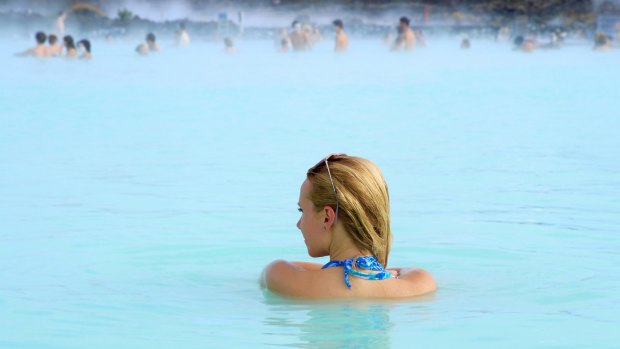
Blue Lagoon: A land of freezing temperatures and rugged land proves surprisingly nurturing.Credit: iStock
Tears of rain drizzle down the window of our minivan through which I can make out bald, black volcanic slopes layered in thin veils of mossy green. Tempestuous dark clouds portend a chilly afternoon. It's not quite what we wanted for our glacier walk after such a sunny start to the week here. But this is Iceland.
Sensing the mood, Audbjorg, our guide, pipes up in the inimitably optimistic way Icelanders tend to talk about the weather. "Okay, everybody," she says. "We need the rain and we need the wind and we need the storm clouds. So let's say 'thank you'."
With that, she plays a song, a melodic beautifully crafted tune by Icelandic band Dikta. It is called, simply, "Thank you". It's the kind of song you fall for on first listen. "Thank you for the world, the world, the world," it goes.
It prompts my own moment of gratitude for this amazing place where meteorological and seismic activity dictate daily life, where the land bubbles and trembles, flows and erupts, smokes and mists, and where the resilient populace bends and flexes in harmony with the whims of mother nature. There's a lot to be thankful for.
I'm on a trip with small group tour company G Adventures. The week-long Iceland itinerary has been built around the theme of wellness and it's precisely what attracted me to it.
Since the onset of the pandemic wellness figures as a necessary addition to my travel itinerary, rather than the luxury it may have been in a more normal past.
Similarly, when contemplating time away, I tend to crave more remote locations, fresh air, places that feel wild. For returning visitors the world over, like me, Iceland is proving the perfect destination to fulfil these yearnings and here, based on my week-long experience, is how to do it.
DAY ONE
COLD COMFORT AT A GEOTHERMAL BEACH
The information board at Keflavik International Airport jokes that the best time to visit Iceland is from January 1 to December 31. I'm visiting in July at the height of an Icelandic summer when the days are so long I'm having to pull the blinds at 11pm to get to sleep. In sync with the season, the sky yawns big and cerulean blue.
With the temperature hovering around 19 degrees celsius. It feels warm - perfect in these parts for a day at the beach. On the Atlantic Ocean in the capital of Reykjavik, Nautholsvik Geothermal Beach (nautholsvik.is) is the city's own Ibiza (according to another local joke).
It was cleverly constructed in 2000 using imported yellow sand and a retaining wall to create a lagoon that mixes frigid seawater (sitting between minus two and 10 degrees) with hot geothermal water pumped from a nearby spring.
The idea is to take a dip - Wim Hof style - in the geothermally warmed beach, then immerse in the naturally cold ocean water, a process that is said to boost the immune system, among other health benefits.
I'm all for it, but I quickly learn that the warmed water, at 17 degrees, gives me the cold snap I'd been hoping for without the need to test the ocean currents like the Icelanders do.
The reward for the rush of goosebumps and the ache in my extremities is a soak in the hot tub. I join a throng of Reykjavik locals, for whom this is a regular activity, in the steaming 38 degree water, summer sun on my face.
DAY TWO
DOWNWARD DOGS BETWEEN TECTONIC PLATES
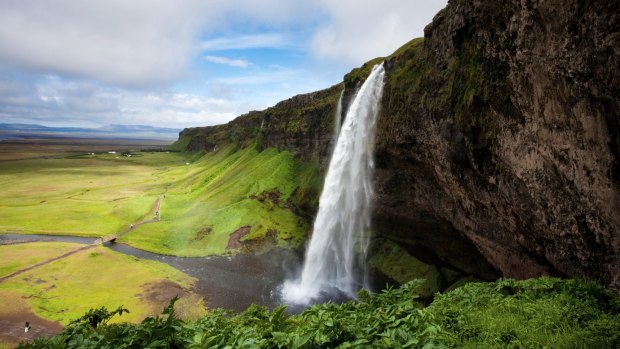
Credit: G Adventures
Iceland is the only land mass straddling the Mid-Atlantic Ridge, a rift between the North American and Eurasian tectonic plates that is moving apart by 2.5 centimetre each year.
At UNESCO world heritage-listed Thingvellir National Park (thingvellir.is), cliff-high walls of rock mark the edges of the two plates. Visitors can literally stand between them in Almannagja Valley, a flat treeless expanse carpeted in native grasses and meadow flowers with the Oxara River and lake system in the middle.
The park is well-known as the birthplace of Iceland's parliament in 930 and the remains of the open-air assembly grounds are still visible.
But it's the landscape that beckons. Campers, their tents camouflaged in the hillocks, have astonishing views of distant snow-capped mountains. Walkers follow the walls of rock to pristine Oxarafoss waterfall with its clear icy ponds.
Snorkellers and free divers, equipped with dry suits, sink below the surface of Silfra, the famed glacial water fissure between the plates.
For us it's a hatha yoga class led by Audbjorg. It's the perfect yoga studio. Lapping lakes to one side, mighty mountains on the other, greenery for miles. We devote the class to nature. A tree pose for balance, a mountain pose for stability, a child's pose with our heads bowed to this geographically wondrous land.
DAY THREE
BAKING RYE BREAD: THE GEOTHERMAL METHOD
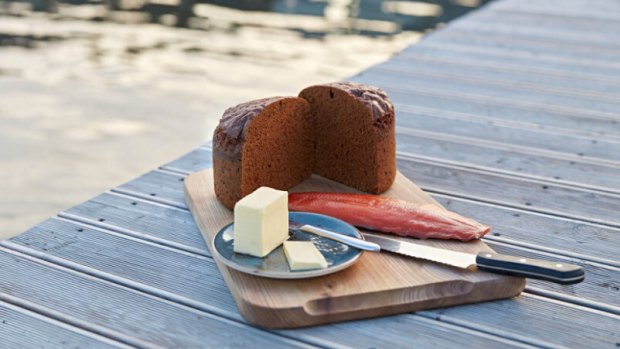
Credit: Laugarvatn Fontana
Fontana Geothermal Baths sits right on the edge of Laugarvatn Lake, a shallow, black, sandy body of water heated by underlying geothermal springs. On the lake's edge, boiling inky mineral water bubbles up through the volcanic sand providing a natural oven for baking traditional Icelandic rye bread.
It is called "hverabraud", which translates as "hot spring bread" according to our guide Filipe, or simply "rugbraud" (rye bread). The recipe is simple – a mix of flour, sugar, baking powder, salt and milk poured into a greased tin but the method has its quirks.
On the edge of the lake, the water gurgling hot in puddles around us, Felipe digs under a small mound of dirt to unearth yesterday's loaf. The tin is silty black and burning hot to the touch having been baked for 24 hours. When he removes the lid to reveal the spongy brown loaf, more cake than bread, we are overwhelmed by a heady whiff of gingery goodness.
Back inside, slices of bread are slathered with melted butter, and layered with slices of delicate trout, which has been fished fresh from the lake and smoked by a local business. It is a taste sensation.
"The land is the star," Felipe says after we've had our fill. "I can give you the recipe, you can cook it in an oven at home, but it will never taste the same as here because of the water, the heat, the minerals, the air."
Afterwards, we soak in the varying temperatures of Fontana's five lakeside mineral baths. Wafts of steam rise from my arms as I walk from the hot bath to cold lake. We're told it improves blood circulation and speeds muscle recovery but mostly it just makes me feel good to be alive.
DAY FOUR
HOT FOOTING IT TO A HOT SPRINGS STREAM
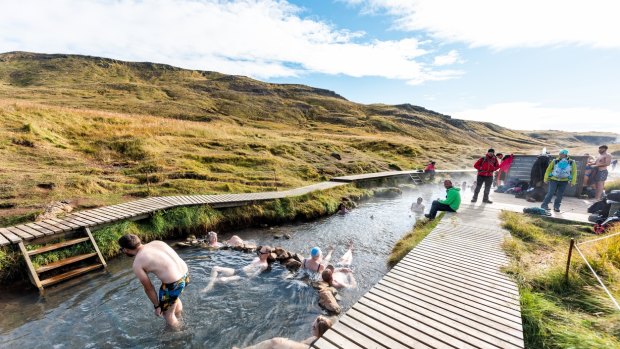
"Too much hiking", one of my fellow travellers bemoans on the morning of day four, but I love the hikes. They give me precious alone time for walking meditations and they put a spring in my step, especially when they lead to another of Iceland's geothermal quirks.
Reykjadalur, not far from the town of Hveragerdi where we're staying, is an hour-long hike to an improbable steaming hot river. The hike starts steep, revealing great plumes of steam across the valley the higher I trudge.
Along the gravelly path, trickling rivulets of water, hot to the touch, create mini steam drifts. Miniature forests of tiny blooms and micro-herbs scramble for a root-hold on drifts of black volcanic earth, which threaten to crumble away from the mountain face at any time.
At the top, the stream widens into a steaming river that winds like a snake through fairytale pastoral greenery. Shaggy sheep, released by farmers to the highlands for fattening over summer, join me on the path. Boardwalks and simple platforms added during pandemic downtime indicate where to swim.
In my bikini, I take the rickety wooden steps down to sit in a hole formed by the placement of a little rock wall, the warm water swirling around my neck. It's only 12 degrees outside today so the water, which gets hotter the closer you go to the source, is a heavenly 34 degrees. I soak up the surreal surroundings with the current flowing through me, cleansing as it goes.
DAY FIVE
THE GREAT GLACIER CHALLENGE
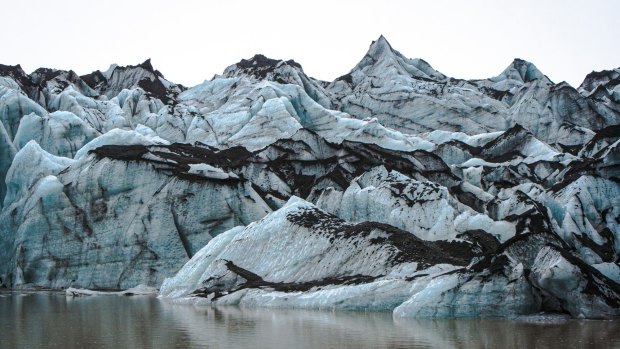
Credit: G Adventures Inc
This glacier walk is our most challenging day our time in Iceland, especially with the temperature dipping and the weather closing in. But Dikta's "thank you" song is still playing on my mind. I can do this.
Solheimajokull Glacier is a part of Myrdalsjokull, one of Europe's biggest glaciers covering almost 600 square kilometres and with a lofty peak of nearly 1500 metres. But it's what lies beneath that captures our attention.
Below the glacier with an astonishing 10 kilometres caldera is Katla, one of Iceland's largest and most active volcanoes. "It erupts every 20 to 90 years," says our guide Elena, somewhat too jubilantly. "It hasn't erupted properly for 104 years so it's definitely overdue".
With rain battering the roof, we change into hiking boots and waterproof gear, and gather our equipment - crampons, harness and pick-axe. At the base of the glacier great chunks of ice float in a lake like a blue curacao cocktail.
Elena's safety talk - how to walk with crampons, how to hold a pick-axe - distracts us from an insistent icy wind. We trudge single file from black gravel onto crunching ice keeping flat-footed so our crampons grip.
The glacier is sprinkled with fine volcanic ash, like black icing sugar, but with a chip or two of the pick-axe, the gem-like blue of ice created a millennia ago gleams bright like a treasure unveiled.
This adventure is short but heavy going. Water drips from my gloves and trickles into the back of my boots. Each footstep on this uncharted terrain takes a concentrated effort. It's a mental game, but it pays off.
On a clearing surrounded by icy blancmange-like peaks we sit to marvel at the glacier's ageless beauty and meditate in its eerie silences, happy with our success.
DAY SIX
GOING WITH THE LAVA FLOW
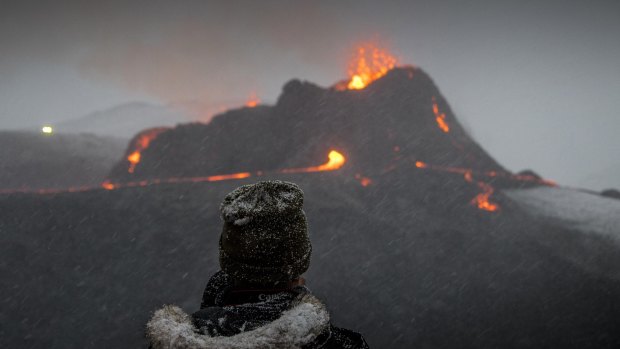
Credit: AP
"We have earthquakes every day and we expect volcanoes to erupt at any time," Audbjorg says as we drive towards Geldingadalir volcano lava flow. "We are not scared, it is part of our life."
Geldingadalur on Fagradalsfjall Mountain in Reykjanes Peninsula erupted last year [2021] and for six months spewed fiery orange lava into the two valleys below it, eventually filling them up like water in a bath.
"The land constantly changes around us," Audbjor adds. "It is one of the most exciting things about our country."
We don't argue. With mats slung over our backs we walk up the valley, its vastness populated by the pock-marks of age-old volcanos.
From a lookout we can see the Fagradalsfjall caldera a few hundred metres away and an enormous valley filled with an oily lake of solid lava, its shiny black quality attributed to how quickly it cools in the freezing air.
Walking on the lava is like crunching burnt meringue underfoot. We marvel at the wisps of steam indicating heat pockets where we can warm our hands. This lava has risen from a magma chamber deeper than the ocean floor. Our yoga poses are fittingly inspired – today we are warriors and goddesses.
A month after our trip we receive word from Audbjorg that another volcano has erupted on Fagradalsfjall Mountain – the Meradalir volcano, not far from where we did our yoga class. She sends the group a happy snap - an Icelander in her comfort zone, the lava blistering behind her.
DAY SEVEN
GEOTHERMAL HOT SPRINGS AT THE RETREAT, BLUE LAGOON
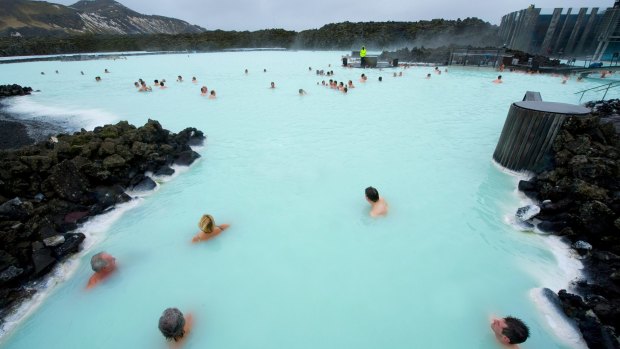
My trip finishes on a heavenly high at the iconic Blue Lagoon (bluelagoon.com), Iceland's famed geothermal hot springs.
The mineral-rich milky ponds here are dazzling against the black volcanic rock landscape, the weightless waters providing a day of relaxation surrounded by impeccable nature. I farewell the group in the public area before experiencing The Retreat at Blue Lagoon, the luxury day spa.
This place is epic with candlelit subterranean treatment chambers and steaming hot pools in lava corridors that I mostly have to myself.
Floating on my back, the cloudless sky blurs in my peripheral vision with the steaming waters. With phones and cameras prohibited, this is precious time to mentally download my week of wellness. The hikes and hot-cold immersions leave me feeling energised and exercised.
On the trip, the meditation sessions have allowed me headspace for gratitude while the yoga classes have connected me to a land where mother nature rules supreme. But there's something else, something I can't quite articulate. Perhaps Dikta put it best: "Thank you for the world, the world, the world … thank you for the life you're making me see, inside of me".
THE DETAILS
FLY
Finnair (https://www.finnair.com/) and Qantas (https://www.qantas.com/au/en.html) have codeshare flights from Melbourne to Reykjavik via Singapore/Bangkok/Hong Kong and Helsinki from AUD$2366 return.
TOUR
A seven-day "Wellness Iceland" trip with G Adventures starts from $4469 a person travelling from the Icelandic capital Reykjavik return. The price includes upgraded accommodation, activities mentioned, private transportation, select meals and a "chief experience officer" to lead the trip throughout. See gadventures.com
TAKE
Be prepared for rain, sun, wind and snow even in summer when the highlands can get cold. Essentials include windproof rain jacket, winter coat, waterproof backpack cover, fleece top/sweater, long pants, woollen layers, gloves, hat, swimsuit, trainers, hiking boots/shoes, thong-style shoes for hot spring visits, large towel, comfortable clothing suitable for yoga, face towel, journal, water bottle, Keepcup. Glacier hikers can hire waterproof jackets, pants, gloves and (essential) hiking boots with ankle supports.
See www.gadventures.com.
MORE
Penny Watson was a guest of G Adventures (www.gadventures.com) and The Retreat at Blue Lagoon (www.bluelagoon.com)
FIVE MORE THINGS TO SEE AND DO IN ICELAND
WANDER THE WATERFALL WAY
The much-photographed Skogafoss has a 60 metres drop that creates rainbows in the sunlit mist. Seljalandsfoss, of similar height, has a path behind the wall of cascading water. Gullfoss is wide and thunderous, cascading over three tiers.
IMMERSE YOURSELF IN ART
Reykjavík Art Museum's Hafnarhus (listasafnreykjavikur.is), in an edgy warehouse space featuring exhibits by renowned Icelandic artists including Erro.
VISIT AN ARCHITECTURAL MARVEL
Reykjavik's Harpa Concert Hall's (harpa.is) glass geometric facade reflects the nearby harbourfront and the country's basalt landscapes.
GAZE AT A GEYSER
In Haukadalur valley in Iceland's south-west, Strokkur is a hot spring geyser that spectacularly erupts boiling hot water 20 metres into the air every seven or so minutes.
WORSHIP A LANDMARK
Rising almost 75 metres on a hilltop, Reykjavik's Hallgrímskirkja (hallgrimskirkja.is), or Church of Hallgrimur, is one of the city's most eye-catching cultural icons which took more than 40 years to build.
The writer was a guest of G Adventures (www.gadventures.com) and Blue Lagoon Retreat (www.bluelagoon.com)
Sign up for the Traveller Deals newsletter
Get exclusive travel deals delivered straight to your inbox. Sign up now.